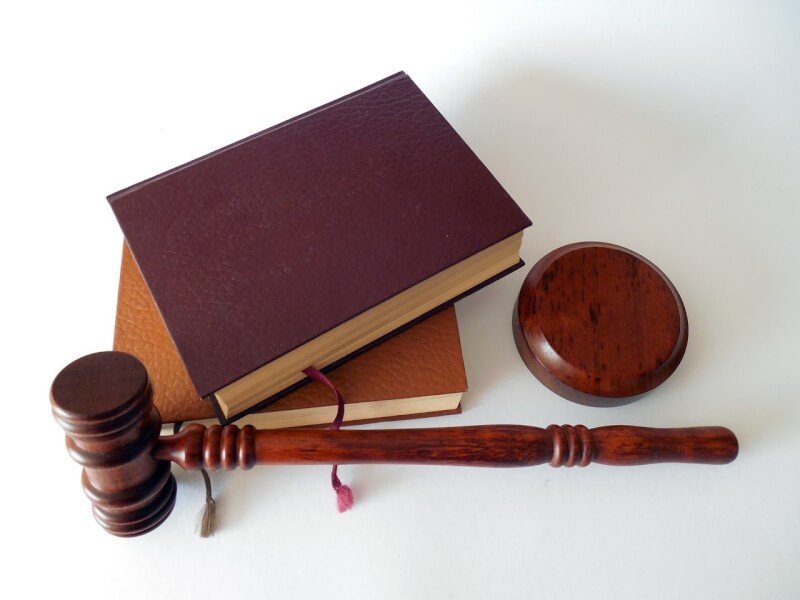If you’re an avid enthusiast of flying remote control aircraft, it’s crucial to be aware of the regulations that govern the skies in your area. Understanding the rules and restrictions not only ensures your own safety but also respects the privacy and comfort of those around you. Whether you’re a seasoned hobbyist or just starting out, this article provides a concise overview of the regulations you should keep in mind when taking to the skies with your RC aircraft. So buckle up, fasten your seatbelt, and let’s explore the airspace!

Choosing the Right RC Aircraft
Considering the Different Types of RC Aircraft
When it comes to choosing the right RC aircraft, it’s essential to understand the different types available. There are various options to choose from, including airplanes, helicopters, quadcopters, and gliders. Each type offers a unique flying experience and requires a different level of skill to operate. Take some time to research and consider the type of RC aircraft that aligns with your interests and abilities.
Understanding the Capabilities and Limitations of RC Aircraft
Before making a purchase, it’s crucial to understand the capabilities and limitations of RC aircraft. While they offer an exciting flying experience, RC aircraft have their limitations when it comes to speed, range, and flight time. It’s important to choose an RC aircraft that matches your flying goals and needs. For example, if you’re interested in executing aerobatic maneuvers, a high-performance airplane might be a suitable option. However, if you’re looking for stable and slow flying characteristics, a glider might be more appropriate.
Selecting the Appropriate RC Aircraft for Your Skill Level
When selecting an RC aircraft, it’s essential to choose one that aligns with your skill level. If you’re a beginner, it’s advisable to start with a trainer aircraft that offers stability and easier control. As you gain more experience, you can progress to more advanced models that require higher levels of piloting skills. Remember that flying RC aircraft requires practice and patience, so it’s crucial to choose an aircraft that allows for gradual skill development and growth.
Registering and Labeling Your RC Aircraft
Understanding the Importance of Registering Your RC Aircraft
Registering your RC aircraft is a crucial step in ensuring compliance with aviation regulations. In many countries, including the United States, registering your RC aircraft is a legal requirement. Registering helps authorities track and regulate the growing number of RC aircraft in use. It also assists in the recovery of lost or stolen aircraft and aids in identifying responsible operators in the event of an incident. By registering your RC aircraft, you are taking an important step towards responsible and accountable flying.
Ensuring Proper Labeling of Your RC Aircraft
Properly labeling your RC aircraft is another important aspect of responsible flying. Labels should include your contact information, such as your name, phone number, and email address. In the event that your RC aircraft becomes lost or involved in an incident, these labels will provide a means for others to reach out to you. It’s recommended to affix the labels in an easily visible location on your aircraft, such as under the wing or on the fuselage.

Flying in Designated Areas
Identifying Authorized Airports and Airfields for RC Aircraft
When flying RC aircraft, it’s crucial to identify authorized areas where flying is permitted. Flying RC aircraft near airports and airfields is generally prohibited due to safety concerns and potential interference with manned aircraft operations. To ensure compliance and safety, always research and identify authorized areas that are designated for RC aircraft flying. Check with local aviation authorities or online resources for a list of approved locations in your area.
Checking for Local RC Flying Clubs and Fields
Another option for finding designated flying areas is to check for local RC flying clubs and fields. These clubs often have designated areas specifically for RC aircraft operations and may offer a safe and supportive environment for pilots of all skill levels. Joining a local RC flying club can provide access to experienced pilots who can provide guidance, as well as opportunities to participate in organized events and fly alongside fellow enthusiasts.
Contacting Authorities and Local Agencies for Permissible Flying Areas
If you are unable to find designated RC aircraft flying areas through online resources or local clubs, it may be necessary to contact authorities and local agencies for information. Municipal or county offices, parks and recreation departments, or even local law enforcement agencies may have knowledge of suitable locations for RC aircraft flying. Their guidance can help ensure that you’re flying in areas that are both legal and safe.
Height and Distance Limitations
Understanding the Maximum Altitude Restrictions for RC Aircraft
When operating RC aircraft, it’s crucial to understand and adhere to maximum altitude restrictions. These restrictions are in place to prevent potential conflicts with manned aircraft and ensure the safety of the airspace. In many countries, including the United States, the Federal Aviation Administration (FAA) sets a maximum altitude limit of 400 feet for RC aircraft. It’s important to familiarize yourself with the regulations specific to your country or region and always fly within the prescribed altitude limits.
Adhering to Distance Limitations for RC Aircraft Operations
In addition to altitude restrictions, distance limitations are also important to consider when operating RC aircraft. It’s crucial to maintain a safe distance from airports, helipads, and other sensitive areas. Always be aware of your surroundings and ensure that you are not flying within prohibited airspace. Respect the privacy and security concerns of others by avoiding flying close to residential areas or public gatherings. Adhering to distance limitations promotes safe and responsible RC aircraft operations.

Avoiding No-Fly Zones
Identifying Restricted Airspace and No-Fly Zones for RC Aircraft
One of the key responsibilities of RC aircraft operators is to identify and avoid restricted airspace and no-fly zones. These areas may include military installations, national parks, or other sensitive locations. Research and familiarize yourself with commonly known no-fly zones in your area. Additionally, consult local aviation authorities, maps, or online resources to ensure you are aware of any temporary or localized restrictions that may be in place.
Understanding the Proximity Restrictions to Airports and Helipads
Maintaining a safe distance from airports and helipads is crucial for the safety of both manned and unmanned aircraft. The proximity restrictions can vary depending on the country and local regulations. It’s important to understand and adhere to these restrictions to avoid potential conflicts and ensure the safe operation of your RC aircraft. Always research and be familiar with the regulations specific to your area regarding the minimum distances from airports and helipads.
Avoiding Sensitive Areas and Government Facilities
Certain areas, such as government facilities and sensitive infrastructure, may have additional restrictions on RC aircraft operations. It’s crucial to respect these areas and avoid flying near them to ensure the safety and security of these sensitive locations. Familiarize yourself with local regulations and always fly in areas that are designated as safe and permissible for RC aircraft operations. By doing so, you are demonstrating responsible and respectful behavior as an RC aircraft pilot.
Operating Time Restrictions
Being Aware of Daytime and Nighttime Restrictions
Different countries and regions may have specific regulations regarding daytime and nighttime flying for RC aircraft. It’s important to be aware of these restrictions and comply with them accordingly. In most cases, RC aircraft operations are limited to daylight hours to ensure optimal visibility and safety. Flying at night may introduce additional risks and challenges. Always check the regulations applicable to your area to determine the specific limitations regarding daylight and nighttime operations.
Understanding Sunset and Sunrise Guidelines for RC Aircraft Operations
To ensure a safe and enjoyable flight, it’s essential to understand the guidelines for RC aircraft operations around sunset and sunrise. These times of the day can present unique challenges due to changing light conditions. It’s important to be mindful of visibility and ensure that you can maintain line of sight with your RC aircraft at all times. Familiarize yourself with the specific sunrise and sunset guidelines for your area and plan your flights accordingly to ensure a safe and responsible flying experience.
Safety Precautions
Adhering to Line of Sight Regulations
Maintaining visual contact with your RC aircraft is crucial for safe and responsible flying. Many countries have regulations that require RC aircraft operators to maintain line of sight with their aircraft at all times. This means that you should always be able to see your aircraft without the assistance of binoculars or other visual aids. Flying within line of sight helps prevent collisions and ensures that you can react to any potential hazards promptly.
Ensuring Proper Battery Management and Safety
Proper battery management is essential for the safe operation of RC aircraft. Always follow the manufacturer’s instructions and guidelines when it comes to battery selection, charging, and storage. Using the correct batteries and chargers designed for your specific RC aircraft model is crucial for safety and optimal performance. Regularly inspect your batteries for any signs of damage or wear and replace them as necessary. By prioritizing battery management and safety, you can minimize the risk of accidents or malfunctions during your flights.
Maintaining Safe Distance from People and Property
To ensure the safety of others and protect property, it’s vital to maintain a safe distance when operating RC aircraft. Avoid flying in crowded or heavily populated areas, as there is an increased risk of accidents or collisions. Respect the privacy and personal space of others by flying at a safe distance from people, buildings, and vehicles. Additionally, be mindful of wildlife and avoid disturbing natural habitats. By maintaining a safe distance, you can minimize the potential for accidents and promote a positive perception of RC aircraft among the public.
Avoiding Hazardous Weather Conditions
Flying RC aircraft in hazardous weather conditions can be dangerous and lead to accidents or damage to your aircraft. It’s essential to monitor weather forecasts and avoid flying in conditions such as strong winds, rain, thunderstorms, or low visibility. Adverse weather can affect the stability and control of your RC aircraft, increasing the risk of loss of control or crashes. Prioritize safety by only flying in favorable weather conditions and always be prepared to postpone or reschedule your flights if necessary.
Obtaining Permission for Special Operations
Understanding the Process for Special Operations
Certain operations, such as flying in controlled airspace or conducting aerial photography/videography, may require special permissions or authorizations. It’s important to understand the process for obtaining these permissions and comply with the necessary requirements. Research the specific regulations and procedures applicable to your area and follow them diligently. By doing so, you can ensure that you are operating within the legal framework and promoting safe and responsible RC aircraft operations.
Obtaining Authorization for Flights in Controlled Airspace
Flying in controlled airspace, such as near airports or in restricted areas, usually requires authorization from the appropriate authorities. If you intend to fly in these areas, it’s important to contact the relevant agencies or air traffic control facilities to obtain the necessary permissions. Follow the established procedures and provide all required information to support your application. Always respect the instructions and restrictions provided by the authorities to ensure the safety and integrity of manned aircraft operations.
Securing Permissions for Aerial Photography and Videography
If you plan to use your RC aircraft for aerial photography or videography, additional permissions or licenses may be required. Photography and videography can sometimes involve privacy concerns, so it’s crucial to understand the legal requirements and obtain any necessary authorizations. Research the regulations regarding commercial or recreational use of images or footage captured by RC aircraft in your area. Consult the appropriate local authorities or aviation organizations for guidance on the specific permits or licenses that may be required.
Applicable Age and Supervision Requirements
Meeting Age Restrictions and Requirements for RC Pilots
Different countries may have varying age restrictions and requirements for RC pilots. It’s important to familiarize yourself with the regulations applicable to your area and ensure compliance. Some countries may have a minimum age requirement for operating RC aircraft, while others may have specific rules for different age groups. Always follow the guidelines and recommendations to ensure safe and responsible piloting. If you’re not of the minimum age, consider involving a qualified adult or instructor who can assist and supervise your flying activities.
Ensuring Supervision of Young or Inexperienced Pilots
For young or inexperienced pilots, it’s important to prioritize supervision to ensure safe and responsible flying. Whether it’s a child or someone new to RC aircraft, having a knowledgeable and experienced adult nearby can provide guidance and help mitigate potential risks. Make sure the supervising person is familiar with the operation of RC aircraft and understands the safety protocols. By establishing proper supervision, you can promote a positive and safe learning environment while providing necessary guidance and support.
Educational Resources and Training
Seeking Educational Materials and Guides for RC Piloting
In the world of RC aircraft, education is key to responsible and skilled piloting. Seek out educational materials, such as books, online articles, or videos, that provide valuable insights into RC piloting techniques, safety practices, and regulations. These resources offer guidance for beginners and experienced pilots alike, covering topics such as flight controls, aerodynamics, and emergency procedures. By investing time in self-education, you can enhance your skills and knowledge to become a proficient and knowledgeable RC aircraft operator.
Joining RC Training Programs and Workshops
If you prefer hands-on learning, consider joining RC training programs or workshops offered by local clubs or organizations. These programs provide practical training sessions and guidance from experienced instructors. By participating in training programs, you can learn essential flying techniques, gain confidence in your piloting skills, and receive valuable feedback and tips from seasoned RC pilots. Training programs and workshops create a supportive learning environment and open opportunities for interaction with like-minded individuals who share your passion for RC aircraft.
In conclusion, choosing and operating an RC aircraft requires careful consideration of various factors, including the type of aircraft, skill level, and compliance with regulations. Understanding the regulations and guidelines relevant to your area is crucial for safe and responsible flying. By following the outlined recommendations and adhering to safety precautions, you can enjoy the thrill of RC aircraft while ensuring the safety and enjoyment of yourself and those around you. Embrace the opportunities for education and training, and remember to always prioritize safety first. Happy flying!


